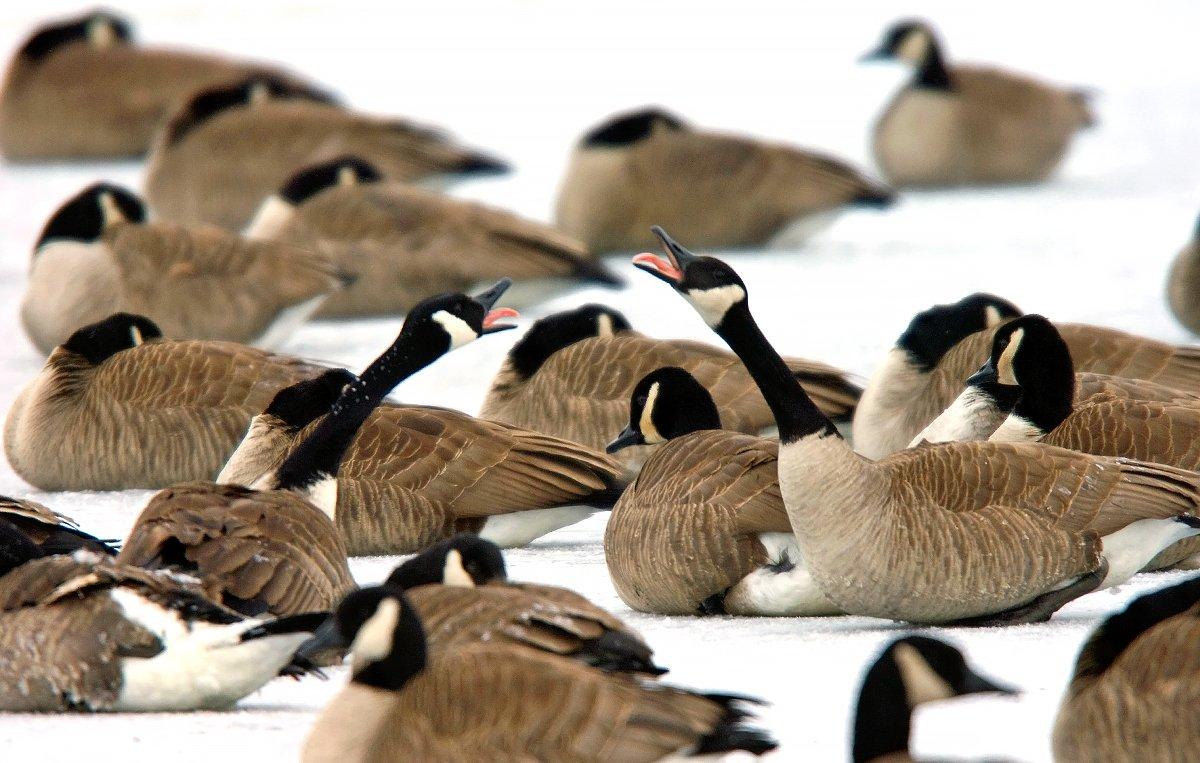Chasing honkers in the snow adds twists, challengs to the game
Some forms of waterfowl hunting scream rugged adventure.
Open-water hunting qualifies, especially when the mercury slides south and the wind whips up. High-effort free-lance hunts on the prairies also require a bit of daring and some gut checks. But for many folks, nothing compares to chasing late-season honkers in the snow.
Such hunts are almost ironic, considering that many people begin targeting Canada geese when it's still technically summer and the mercury might push 90. Further, most hunters associate waves of migrating honkers with the golden days of autumn and a background of blood-red maple leaves, crystal-blue water and the pale-yellow palette of freshly cut corn.
But as winter arrives, many dark geese resist the urge to migrate and hang in the North, content to roost on the few remaining patches of open water and carbo-load on waste grain — even fields covered in snow. Savvy hunters take advantage, scouting and pursuing honkers until the final days of the season, even if it means braving subzero wind chills and trudging across rock-hard chisel-plowed fields.
At its core, chasing Canadas in snow-covered environments is pretty similar to early- and mid-autumn hunting. You scout fields and roosts, and then set an ambush to intercept birds as they fly in to feed. However, conditions make the game a bit different.
First, because open roosting water and accessible fields are scarce, you'll often find large concentrations of birds. That's good, of course, but it can make hunting challenging when 50 or more pairs of eyes descend on your setup.
Also, remember that too much snow isn't good. Geese will easily dig through a few inches to munch corn kernels below. However, a half-foot or more of the white stuff makes that more difficult and might send birds south.
Further, honkers — especially pressured geese — often adapt their patterns during the frigid late season, sometimes only making one feeding flight per day, typically with only a few minutes of legal shooting light remaining. They'll alter that as weather approaches, of course, but it's not uncommon to see them hunkered down at a roost all day and then make a bee line for a hot field as the sun sinks to the west.
In addition, snow requires different concealment considerations. Remember, you're hunting geese that have been gunned at for weeks or months, and few gullible birds remain. You must be absolutely hidden to decoy big flocks. Use whatever natural cover possible, such as fence lines, rock piles or weed patches. Remember, however, that those might be in short supply after a good snow, so you'll often have to set up on wide-open ground in the middle of a field.
If possible, pile snow around your field blinds to break up their outlines. Just make sure you don't leave suspicious-looking bare ground near your set-up spot. Camouflaging the doors and tops of your blind can be more difficult, but spraying them with artificial snow from an aerosol can works pretty well (check out these tips from Fowled Reality). Also, throw a few decoys right around your hides to further break up their silhouettes.
If you're hunting without blinds, wear waterproof clothing to repel melting snow, and cover yourself with a white bed sheet or some other type of white cloth. Just make sure it doesn't flap unnaturally in the wind. Some folks also use white Tyvek protective suits, which are surprisingly inexpensive and blend well with snow. However you hide yourself, dress warmer than you normally would. It's incredible how quickly frozen ground sucks the heat from your body.
Conventional wisdom holds that large spreads usually work better during the late season. That makes sense, considering that geese are grouped up and often descend en masse on a hot field. However, you can still succeed with small setups. Just spread them out, make everything appear relaxed and, if possible, incorporate some movement into your spread in the form of motion stakes or windsocks.
Call and flag just as you would at any other time of year. That is, read the birds, and call more or less depending on their reaction. In a hot field, you might only have to cluck once or twice before honkers set their wings. But in traffic or high-pressure settings, lots of realistic calling to sound like multiple geese can turn the tide.
Above all, enjoy. A prime, fat late-season Canada goose is a real trophy, and taking such birds against a winter backdrop is a unique opportunity. Further, it might be your last such chance of the season. As arctic blasts and more snow hits the landscape, roosts freeze and fields become inaccessible. You might not see those geese again until spring, so cherish every late-season hunt like it's your last.
Click here for more Realtree waterfowl hunting content. And check us out on Facebook.







